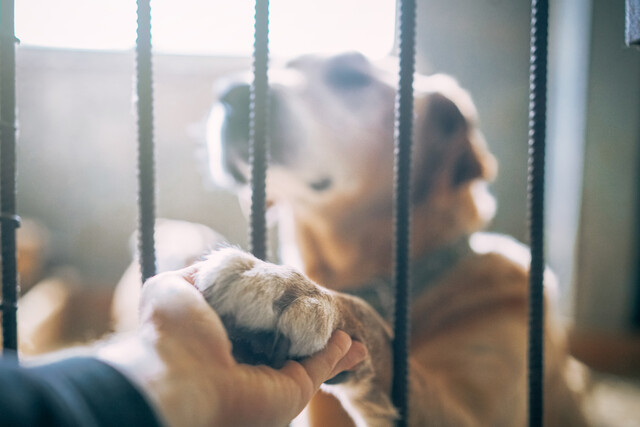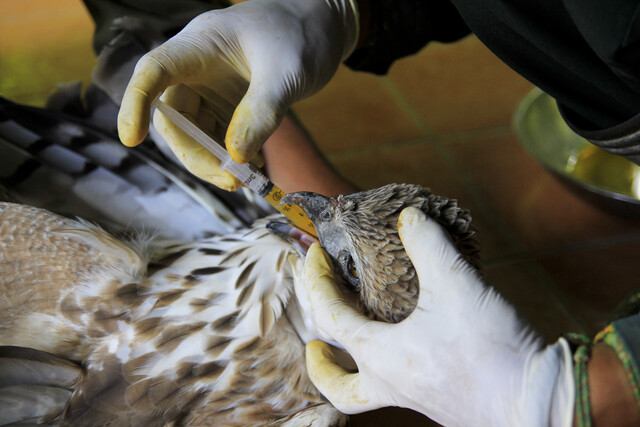Introduction: Every business has rules and procedures for the exact way the owner or administrator wants things to happen. That doesn't mean the rules and procedures are always well written or communicated or understood. However, there must be a standard way of doing things as well as a standard for acceptable behavior in a workplace. For staff, customers and yes, even for dogs, knowing and understanding what is acceptable is necessary.
Staff need to know what happens if they get sick or just want a day off. They need to know the process for how they will be evaluated and how they can earn a raise or a bonus. Training about safety and health practices need to be rigidly taught and adhered to. Employees must be given procedures to make complaints, work out problems, and understand why and how they might be dismissed.
The dog owners require information on how to bring in and pick up their dog each day. They should be kept informed of any health problems and health policies at the center, changes in the fees or services, and how they are expected to pay for and reserve a space. Procedures for relaying information to dog parents about injuries or emergencies and different ways to communicate pet news or current issues in the field should be explored. Customers will want to know how to get a refund if it is due and your policies on taking in and caring for ill pets or pets on medications.
Processes to register pets, complete medical forms, maintain vaccinations, communicate the dog's history and personal pet likes and dislikes must be in place. Making a website where owners can make reservations, change those or cancel them all require procedures that people need to know.
The development of the procedures and rules should be originally written out by the owner but the staff should be able to request revisions if they don't work. Many of the methods you put into place initially will be tweaked during the first year. Make changes slowly and be sure that as you change the way things happen or work at you dog day care center that it is communicated to all and people are retaught. It is difficult for everyone when the policies change, but if something isn't working it has to be revised.
Employee Rules and Processes: Develop a handbook for your staff. In it write a description of each job, the requirements and responsibilities, making them clear and specific. Put it on your web site. If you don't make it clear, your employees will each do the work in a different way. You need to be sure that if the rules state that the dogs get a snack at 10:00 that it does happen at 10:00. If you want behavior reports on pets done on a certain form, then they should be done on that form. You also want staff to have specific actions and words to handle aggressive dogs and in introducing dogs that are new to a large group. If you put up a schedule for your staff work hours and they decide the night before to swap jobs, you have to decide if you are ok with that or not and tell them. You never think of everything, but as you move through the opening stages, be ready to revise and add to the procedural booklet.
The most blatant thing you can do as the owner is to not be specific about what you want. It creates stress and anxiety in your workers and they will assume you don't care how they do it. If you don't care, why should they care about doing something the right way. And - who is to say what is right and what is not right? Give your staff information about how to take days off and if they will get paid for any days off. That might be an earned benefit, but if it is, you must explain to each how to earn it.
You have to write procedures for how employees will be evaluated. This can be tricky. In your mind there will be generally unacceptable behaviors that you may not think you don't have to clarify, yet a staff member doesn't see those actions as you do. At that point you will have to clarify such behaviors to your staff and put them into the policies. In your evaluation you can state the unacceptable behavior as clarified so the employee will be held accountable for it from that moment on. New generations of young adult values may be very different from yours. You may have to decide if the behavior you question is really unacceptable in the workplace or you harbor prejudice about that behavior.
Your staff has to know where they stand financially. Are there raises in their future and if so how can they earn those. You don't have to give huge raises or bonuses but a good employee will only stay if he can be sure his job will help him keep up with inflation. Are you offering group insurance? If not get a volunteer to come in explain how to get on the government medical insurance program.
Explain the importance of staff meetings and make sure staff are paid for their time. Make sure they also have the handbook for appropriate customer processes and dog expectations. Everyone needs to know what you expect from the customers and dogs. Be sure your staff knows that if you have a question about something they do that you will ask them so they can explain. Also make them aware of how you will observe at random on a general basis and not only when someone is in trouble. Make sure they understand that you are watching to see if things are working the way you set them up to work or if they need to be adjusted. Mostly employees want to be recognized for their hard work and respected for their own abilities. In the booklet if there is a path to more responsibilities you can define those.
Customer Rules and Processes: The consumers of your services will want to know a lot of the same things that you make specific for the employees. They will need to know how an aggressive dog will be handled, when and why a pet will be taken to an isolation room away from the general kennel areas and what the expectation will be if their dog gets sick during the day.
Your customer needs to know what the process is for dropping off their pet and again for picking up. If you don't create a process, when there are several arriving at the same time, you may find a melee on your hands. It should be stated in the public handbook how you take care of emergencies and first aid. Your health and safety standards must also be stated clearly. Consumers will want to know your policies for wait time before bringing a dog recovering from an illness back to the center. Facts that you are insured, and what certifications your center, you and your employees have should be stated.
You might want to have an insert about fees, services, package deals, and special offers that change from time to time. That would be for booklets you actually print out. Remember, all pet owners will not be tech savvy.
Make it clear that if they don't show up after reserving a spot, what the consequence is. Consumers who come late will need to know that they will be charged to pay those who have to stay late to attend to their dog and that this includes the dog caretaker, the person on clean up and the front desk employee. You will need to develop a policy and process for refunds and how a customer can pay for services. You might give a small break to those using automatic bank payments or credit cards. It saves working around bounced checks. Explain how to schedule days for their dogs, cancel days, change days, and how to find you on-line. Depending upon where your center is located, you may need to discuss weather closures, emergency evacuation plans and how you are connected to local vets or animal health care services.
Give the pet owners information about how to communicate with your center, you personally, or to get information about upcoming and current events locally. Let them know you are available to discuss their dog's behavior, training, or other issues on which they need guidance.
It is also good policy to state exactly what products you use for cleaning, how often you clean, and how you keep dog feces out of the dogs bedding and eating area. The activity schedule for each day can be put into this booklet, with information about the staff. You want to build relationships between the staff and the customer and the dogs.
Let them know about how you intend to use technology and ask if they want to opt out of any. Inform each doggy parent that your staff may call them from time to time with small things your dog is enjoying, possibly with a photo and that they can opt out of that as well. You want to give those helicopter moms what they want and still stay clear of busy parents who don't want to be interrupted.
Information that is made clear and communicated effectively will keep your relationships with consumers positive.
Dog Rules and Processes: Your staff, your customers and their dogs have to know what the rules are for the dogs at the day care center. There has to be an expectation that dogs will not cause harm to other dogs or staff and that dogs can be integrated with other dogs or allowed a more isolated spot. Perhaps the center can provide slide in walls for a dog that needs more isolation from other dogs. There are many ways to solve this problem yet still access the outside.
Dogs should be open to some training as they spend their days in day care. As part of each day at the center, a staff member wants to work with dogs and commands. It will make for a better environment, less stress and happier dogs and people.
You will avoid confusion if you have a set of "rules" for the dogs, train them all alike with the same commands and help the dogs learn those rules. Don't use negative action or reprimands as a consequence. You should not allow dogs to jump up. If they do, simply ignore. You do want them to "come." Give them a small reward when they do. If a dog is a barker, use a signal, like a finger to the lips and when he is quiet, give a small treat. It will be worth your time to do this simple training because over time your center will become a peaceful place for dogs to spend their days. No person or dog can stand continuous loud noise every day. Allow dogs to bark outside as long as it is not excessive.
Dog FAQS: If you are competitive and you love dogs, you need to know about competitive sports for dogs. "Agility" is an obstacle course that is timed for speed and accuracy. You dog will move through frames, tires and weave around poles. You can go to the U.S. Dog Agility Association website to learn more. "Earthdog" is just for terrier breeds. In this sport terriers hunt prey, until they catch them. The American Kennel Club sponsors this. "Flyball," sponsored by the North American Flyball Association puts four dogs on a team to work in a relay of sorts. One dog will hit a box that releases a tennis ball. Another dog picks up the ball and goes through a series of jumps where the third dog picks up the ball and continues on. "Freestyle obedience" is a contest where dogs perform skills they know like bow, jump, back up, but it is choreographed all with music. It's sponsored by the Canine Freestyle Federation. The International Disc Dog Handlers Association has several events that include Frisbees and the International Weight Pulling Association has a competition for dogs where they pull weights on a rail. Mores sports are offered by Dock Dogs, The American Sighthound Field Association, The North American Dog Agility Council and the United Kennel Club.
Summary: Writing rules, policies and procedures or processes for what happens at the center, with the staff, with the dogs and with the consumer is important. You cannot have behaviors open to argument.
Owners need to be aware of the rules and sign a form to say they did indeed sit down with you, review and understand the rules, the expectations from the staff and the expectations the center has with their pets. And you do indeed need to sit down and go over all of these. Customers should know how much energy your staff will give to keeping their dog safe and healthy. They need to know that the center holds the staff to high expectations. They need to know that they also have responsibilities to pay their bill, not be late without extra costs and to alert the staff if their dog is ill or behaving differently than normal.
Every expectation, every rule, every procedure must be written down and explained. The customer cannot think one thing while the center does something else. This keeps everyone and everything above board, fair, and easily discussed. People expect there will be rules. Staff expect there will be rules. The problems happen when the person in charge cannot communicate the rules or consistently changes them. By having them printed out and clearly stated, it keeps everyone on the same page.

























